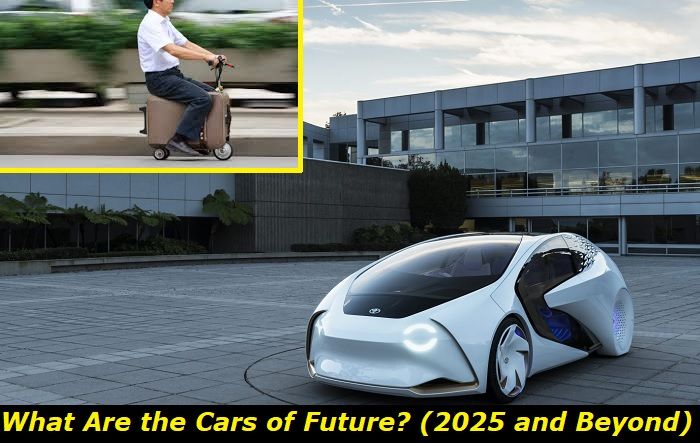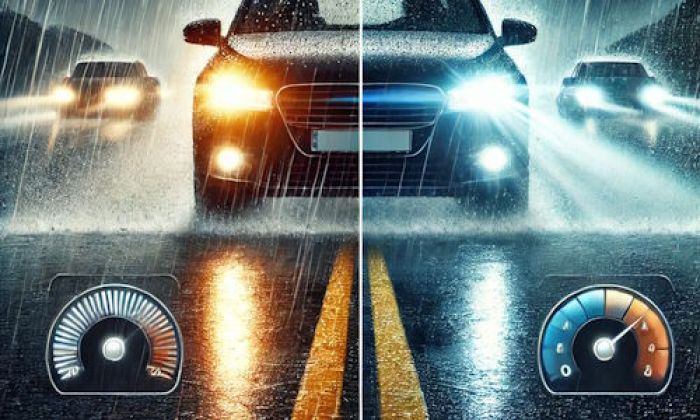Whether you go off-roading, trail-brazing, or just want to get a good view of the countryside, there's no better experience than having a smooth working Jeep to keep it fun. From the thrill of riding over challenging terrains to the excitement of scenic views, your Jeep will always be your buddy.
No-power problems highlights
- Level of urgency:high
- DIY inspection:possible but complicated
- DIY repairs:possible but often complicated
- Can you drive?no
- Price of repairs:$50 - $250
- If ignored:no-start, nothing works
- Ways to fix:check the battery, connections, fuses
.jpg)
Poor Wiring and Electronic Connections
Your Jeep is an entire system consisting of fuses, wires, sensors, and other electronic components necessary to distribute power to the engine and other parts of the vehicle. When there are issues with these components, you may still not run your Jeep even with a good battery. For this reason, you need to find the component with faulty or poor connections.
Dirty and Corroded Battery Terminals
Battery terminals are contacts that connect the battery to a load or charger. It consists of positive and negative terminals resembling metal clips. What they do is distribute power all through the vehicle's electrical system. However, dirt and corrosion would interrupt the flow of electricity powering the engine up. Although it can power up your radio or lights, it may not be enough to start your engine.
To fix this, you can clean it using a designated cleaner, a baking soda solution, hot water, and a toothbrush.
Corroded Electrical Components
Your Jeep comprises electrical metal components like switches, sensors, wires, harnesses, relays, and fuse. When these components become exposed to moisture and dirt, it interrupts their function, causing power delivery issues on the engine.
Check your connections, fuse box, and relay boxes to see which ones are faulty. The problem is if you're not familiar with these locations, you may have trouble locating it. We advise you to contact your expert mechanic to find them for replacement.
Blown fuse
Fuses protect your Jeep's electrical system from short-circuiting and overloading. A blown fuse would prevent current from passing through connectors powering your vehicle. Fuses get damaged from overloading and aging.
However, your Jeep is a system full of fuses. Locating them could be a challenge. You can start with the fuse boxes or your Jeep's manual to check their locations. As we said, finding the blown-up fuse would be difficult. We would recommend contacting your technician.
But if you still want to proceed, check each fuse by removing it from its holder. You should find dark smears on the glass if the fuse has blown. Replacing your fuse could cost up to $150 without the labor. And this is only a reminder that you might compromise the integrity of its electrical system if you DIY.
Bad Alternator
The alternator keeps your battery charged and running. If you have a healthy battery but having trouble keeping it charged, you probably have a faulty alternator. Your engine will not have enough energy to run the vehicle.
To see if the alternator is bad, you would have dimmed interior and headlights. You must have heard growling noises before it failed. If you smell some rubber burning, replace your alternator because it may damage your vehicle.
If your alternator is faulty, it can result in overcharging, rippling voltage, insufficient charging, or irregular charging. As soon as you find the alternator is failing, replace it. You can only drive with it for less than 25 miles, depending on your battery charge.
Starter Component Issues
After checking wiring connections, terminals, battery, and alternator, and you still cannot figure out how to power up your Jeep, it's time to inspect the components responsible for starting your engines.
Start looking at the dirt in your fuel filter and the damages in the ignition switch, starter, fuel pump, or spark plug.
If you have a badly dirty fuel filter, it means the filter has been clogged with dirt and debris-preventing fuel flow. Restricted fuel flow will not start the Jeep. The remedy for this is to replace the fuel filter.
Additionally, the components working together to start your Jeep should be in good shape to keep it working.
The ignition switch activates and deactivates the current throughout your Jeep's electrical systems.
Your starter initiates the combustion cycle in your Jeep.
The fuel pump distributes the fuel from your tank to the engine.
The spark plug initiates an ignition to the chamber to start the engine through a spark.
If any of these parts have broken, disconnected, or worn out, your engine will have no power, even with a good battery. These damages have nothing to do with your electrical system or battery but will prevent your Jeep from starting.
Jeep is in Limp Mode
If your Jeep is a newer model, it must have a security system where the computer stops or restricts the function of any component. This condition is often called limp mode.
If you have removed the battery from your Jeep for a long time or replaced it with a new one, the computer may have trouble detecting it- directing the engine to go on limp mode. The computer does this to protect the other components from getting damaged.
How to fix it?
One way you can fix this is to reset your computer. To reset your ECU, find the OBD-II port under the dashboard.
Look for the fuse box and find the fuse labeled as ECU. Remove that fuse and wait for 30 seconds before reinstalling it.
After reinstalling the ECU fuse, start the engine and put it idle for a few minutes. By that time, your engine should reset and be good to drive. Should your Jeep refuse to start, bring your Jeep to your mechanic.
Computer and Sensor Issues
Computers receive signals or measurements from sensors. Sensors deliver signals to the computer. Many sensors responsible for the proper energy supply are in the system to keep your Jeep going.
Even if you have a good battery, but the computer has been receiving wrong measurements, it will provide wrong directions to components starting your engine.
Additionally, your computer & sensor may fail for many reasons like grounding issues, exposure to moisture or dirt, or overloading.
One of the sensors that may affect your Jeep operation is the Mass Air Flow (MAF) sensor. A new Jeep would illuminate its Check Engine Light alert once it senses computer issues.
Unfortunately, you cannot simply solve this with visual checking. You can best diagnose these issues with an OBD-II scanner. Bring your Jeep to the nearest shop or contact your trusted technician. This problem may bring out a series of codes, and it helps to make an accurate diagnosis before fixing.
Exhaust System Issues
Exhaust Systems may prevent your Jeep from starting to run smoothly. Your exhaust system is responsible for routing the fumes away from the engine and regulating the Jeep's backpressure. If you have checked everything else and have a working battery but still won't start, maybe it's because of a defective catalytic converter or faulty oxygen sensors.
Bad Catalytic Converter
The catalytic converter is responsible for converting exhaust gases to less harmful fumes. Since the cat con is often exposed to exhaust fumes, it can clog or break over time- affecting the number of exhaust gases released into the environment. With improper amounts of converted exhaust gases, the system may generate inadequate power to run the engine.
You can clean the catalytic converter, but a damaged one needs replacement. Some owners delete their catalytic converter, but this is not advisable as emissions can be harmful to the environment.
Faulty O2 Sensors
The O2 sensors communicate with your Jeep's ECU to tell the number of unburned Oxygen flows in the exhaust system. For this reason, any wrong readings will lead to an imbalance air-to-fuel mixture. When the computer directs incorrect air or fuel into the system, your Jeep may run too rich or too lean. This event will make your engine run rough or hard to start.
In this case, your only fix is to replace the sensors. Replacing them ranges from $150 to $500 depending on your unit.
Lack of Fuel
Many reasons go with lack of fuel. Lack of fuel, even with a healthy battery, prevents your engine from running or starting. It can go anywhere from incorrect air pressure, air filter issues, failing oxygen sensors, misfiring spark plugs, fuel system issues, AC issues, exhaust system problems, and oil issues. Fuel is one critical driver of your Jeep aside from battery power.
Good thing your dashboard can easily display when your fuel is lacking. Go to the nearest fuel stop to top up.
Final Thoughts
Having no power does not only mean the problem is in your battery. Some of them arise from different systems that work to power up or run your engine. Systems like the fuel, ignition, electrical, and exhaust system are the ones to check up when your it refuses to start even with a healthy battery. Your electrical connections are common culprits and a bit harder to identify.
If you are not comfortable opening your hood or peaking through fuse boxes, call your technician immediately for an accurate diagnosis.
About the authors
The CarAraC research team is composed of seasoned auto mechanics and automotive industry professionals, including individuals with advanced degrees and certifications in their field. Our team members boast prestigious credentials, reflecting their extensive knowledge and skills. These qualifications include: IMI: Institute of the Motor Industry, ASE-Certified Master Automobile Technicians; Coventry University, Graduate of MA in Automotive Journalism; Politecnico di Torino, Italy, MS Automotive Engineering; Ss. Cyril and Methodius University in Skopje, Mechanical University in Skopje; TOC Automotive College; DHA Suffa University, Department of Mechanical Engineering






Add comment